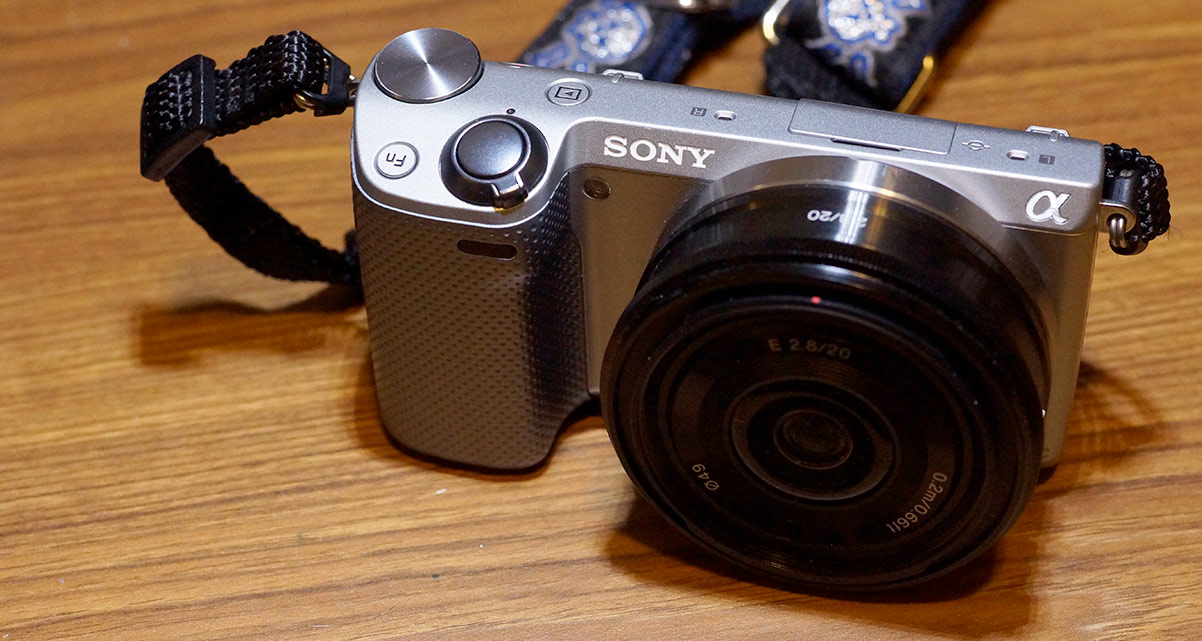After writing this post about how much I still love my 8-year-old Sony NEX-5, I did actually buy a new camera. Well, not so much a new camera as a newer camera.
I bought the last model in Sony’s NEX line, before it was consolidated into its Alpha line of cameras. In the process of becoming the a5000 and a5100 they were stripped of the funny little accessory port where the flash shoe should go, but for which I own several accessories, including a couple of optical viewfinders I like to use with my 16mm and 20mm pancake lenses.
I ended up with a used NEX-5T, at what I consider a crazy bargain price of about $160. That’s for a camera with a dSLR-sized sensor at 16 megapixels, interchangeable lenses and wi-fi connectivity. It’s a camera that cost somewhere in the neighborhood of $400 – $500 new fewer than five years ago. While it’s not full frame (35mm equivalent) or the state of the art, it’s still really good.
In fact, according to DXO, it still beats Sony’s top-of-the-line compact camera, the DSC-RX100V, which costs about a grand.
Released about three years after my original NEX-5, the 5T is definitely more refined. The shutter is quieter, it adds 24p HD video recording, the wi-fi makes it more convenient, and it also has a an extra thumb wheel that makes it easier to change settings like aperture. I do think low-light shots are a little cleaner, but otherwise the image quality is pretty similar.
At the same time, it retains the qualities I love about Sony’s NEX and entry-level alpha cameras. I treat it like a digital version of a so-called “serious compact” film camera, like a Contax T2. These cameras typically had a nice 35mm lens with a relatively large aperture, around f/2.8, making them a good everyday carry camera instead of a larger SLR.
Mostly I use the NEX-5T with either the Sony 16mm or 20mm pancake lenses, which make it super compact and pocketable. If I want something closer to a 50mm-equivalent, I use my Sigma 30mm e-mount, which is bigger, but still light. Altogether the camera plus lens are still about the size of most high-end compacts, but still with superior picture quality.
In fact, I just bought another one for my wife. She got an a5000 because it has a built-in flash, which none of the NEX models have. But otherwise its handling and quality in on par, or even a little better, and it will use my little storehouse of lenses. We also got her Sony’s SELP 16-50mm collapsable zoom lens, because she prefers having a zoom, and yet it’s still very compact. Used, the total package price was just about $300.
The a5000 package replaces her DSC-RX100 Mark II, which just died without warning. When we looked into getting it fixed, we learned the repair would be north of $300, as would a used one. So, why not get something more advanced and flexible for less money? Even if the camera body dies, they’re easier to get fixed, or we can replace it for under $200.
As far as I can tell, these cameras aren’t fashionable amongst “serious” photographers, which must be why they’re so plentiful and cheap on the used market. I’m happy to take advantage and let the “serious” blow their cash on the hard-to-repair popular cameras.
